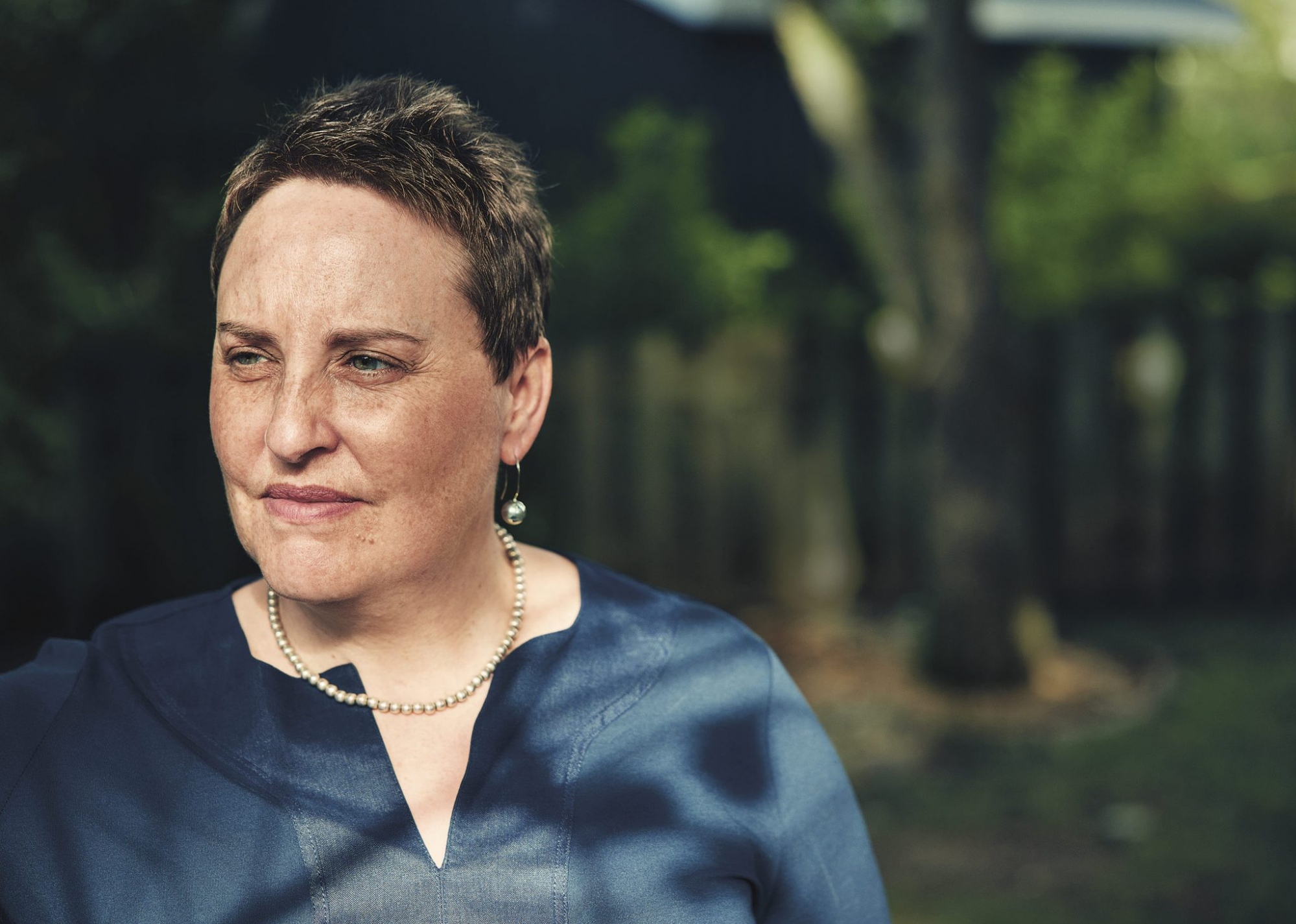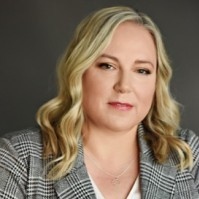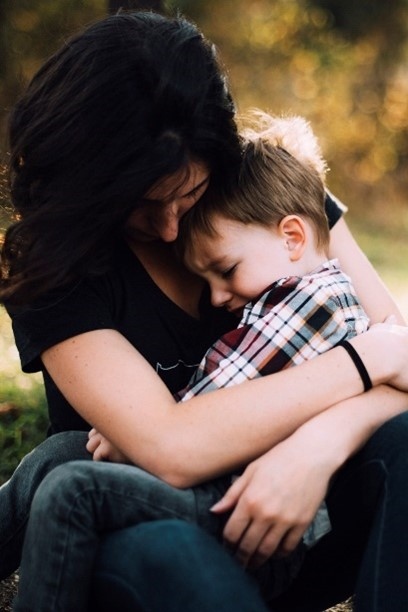Neurodiversity
Did you know that April is World Autism month?
The WIT Network, in continuing our discussion on issues impactful to equity, will be introducing more conversations around Neurodiversity. Scroll through this page to learn more and be inspired.
- What is Neurodiversity? From a leading expert
- Story: A woman's diagnosis at 46 years old
- Blog: To Be Different, Hire Differently - How a CEO changed her company hiring practices!
- Blog: Supporting those who support people living with autism
Our opportunity is to educate, through sharing lived experiences and resources to bring awareness to neurodiversity in the professional space. It is estimated that 15% of the population is neurodiverse.
- As a woman who has been officially diagnosed, are we wearing it proud or are worrying about sharing due to a continued stigma within the workplace?
- As a mom with children on the Autism Spectrum or have ADHD, ADD or other neurodiverse diagnosis, how can you best support each other with current WFH or school requirements?
- As a manager with employees who you believe in and demonstrate amazing aptitude and execution because of their neurodiversity, how do you highlight and promote?
There has been a move by the neurodiverse community to re-label 'disability' and to actually think of it as something, positive, a 'Superpower'.
Do you know someone with a Superpower or what is your Superpower?


The word ’neurodiversity‘ can be credited to Australian sociologist Judy Singer and is a combination of the words ’neurological‘ and ’diversity‘.
Neurodiversity is an umbrella term for neurological conditions and identifications. They include but are not restricted to conditions and identifications such as Autism, ADHD (Attention Deficit Hyperactive Disorder), Dyslexia, Dyspraxia and Tourette‘s.
It is common for people with a neurodivergent profile to have one or more of the conditions highlighted above. Neurodiversity recognises that the brains of people who have neurological conditions are simply ’wired differently‘.
The goal is not to find ways to cure what some perceive as a disability, but to embrace the person and treat them as an equal member of the community.
Their differences should be respected and considered normal.
Watch a Video of Judy‘s 2020 keynote during Stanford University Neurodiversity Project HERE.

My difficulties fitting in, my problems at work and my divorce all made sense when, at 46, I discovered I had autism.
Better Late Than Never.
I‘m 10 years old, away at my first sleepover camp. The rest of the girls in my cabin are trying to put together a skit for the camp‘s variety show, and I can see that it isn‘t going to come together the way they imagine. I have a sixth sense about these things, like I‘m on the outside looking in when I‘m supposed to be part of something. I want to speak up and tell them how to fix it, but I‘ve learned that being a know-it-all does not make me popular.

There was always something about me that most people considered different. As a kid, I didn‘t enjoy sitcoms or skip rope like other girls my age. I wasn‘t comfortable hugging friends, but I did love listening to discussions about politics. I‘ve always been talkative and inquisitive, which wore out the patience of my friends and sometimes even the adults around me. My Grade 4 report summarized my social deficiencies with needs improvement. I stuck out, but I gradually learned to be less conspicuous.
It wasn‘t until I turned 46 that I learned my uniqueness has a name: autism.
That was over three years ago. My diagnosis was like discovering a piece of my brain, picking it up, putting it in place and feeling whole for the first time. This was also like receiving the key to unlock my life and live for the first time—according to my own values, principles, beliefs and choices instead of weighed down by the expectations and assumptions of others. What I‘ve found out since is that there are a significant number of others like me—individuals who weren‘t identified as having autism until midlife. And for reasons that are still coming to light, many of them are women.
Read more HERE – This was published by Readers Digest

Are you Looking to Champion Neurodiversity in Your Organization?
Why not have a chat with Wanda Deschamps, Founder and Principal at Liberty Co where she seeks to increase the participation level of the neurodiverse population in the workforce. You can find out more at Liberty Co's website.


Nicole Mumford
CEO/Co-Founder AirGate Technologies
To establish a different business culture, you need to hire differently. Nicole Mumford, CEO and Co-Founder of AirGate Technologies, is committed building a diverse corporate culture where everyone can achieve their true potential. Her belief is that every human being has an important, valuable contribution to make to this world. That’s the premise on which she operates AirGate. In this article, Nicole shares her thoughts on the value diversity brings (especially as we emerge from the pandemic) and rethinking how we interview.
Why is pandemic recovery the right time to embrace a neurodiverse workforce?
There’s never been a better time to embrace neurodiversity for every reason in the world.
We’ve just gone through something traumatic as a society. It forced us to break down barriers and question how we work. We had to ask, how does work happen? What is the construct of work? What is the function of work? How do we access our work? COVID was the impetus for a period of rampant societal change. An entirely new set of normals has emerged, with technology taking a lead role in almost everything we do.
The idea that we’ve had to adapt work for every human now makes it so much easier to say we can adapt for any human, regardless of their unique diversity or perspective. That makes it easier for us to readily embrace neurodiversity. The fact that we are able to accommodate different needs and ways to work means that there’s never been a better time to make true inclusion real.
We’ve got huge challenges in the technology industry around cyber security and AI. These are complex, interdependent problems that need to be solved – especially in disciplines such as cloud technology – and these solutions will absolutely require anything but sameness. Doing things the same way we’ve always done them is going to yield unsatisfactory results – diversity matters more than ever, in every way.
Embracing neurodiversity and the value that it brings will prove powerful in helping solve the problems that are ahead of us. We need different perspectives. It’s imperative to find and hire talent that thinks about things differently, regardless of industry.
What value do neurodiverse team members bring?
We see the value come alive in the way we see team members help each other become better at what they do. We see them succeed beyond their own expectations, and what that does for the people around them and themselves. We see our customers, clients, and stakeholders all get value from what we deliver.
Work is not done by individuals anymore. Works is done by teams solving problems. Without diversity on the team at every level that we can get it, we would not be as successful as we are in solving those problems and in continuing to earn our clients’ trust.
Diversity means lots of things: not just neurodiversity, but diversity of race, gender, sexual orientation. All provide different perspectives. But in particular, neurodiversity should be considered and is often overlooked.
Just because someone doesn’t communicate the way we expect them to doesn’t mean their brain isn’t doing other things that we want to tap into. Just because they are uncomfortable in certain social situations – I think we are all uncomfortable in social situations since COVID – doesn’t mean they don’t have an inspired viewpoint on AI, or process innovation, or which tool would best solve a business problem. I think those insights are of significant value, and we are missing them, we are absolutely missing them, because we aren’t even contemplating them.
What I’ve witnessed in having these members on my team is that they have grown in ways they never could have imagined; they are doing things they never thought they’d get an opportunity to do; they have changed as humans and become themselves in a new and better way. On a social level, they can build new relationship skills because they’re in a safe and accessible place.
That is true of everybody. If we want to create successful organizations of the future, we need to build a welcoming sense of belonging for everybody and take all those things off the table that get in the way of people becoming their best selves. If we get this right, we get this right for everybody.
How are your interview and hiring processes different than traditional hiring practices?
We look at the human. There’s a lot of variation in the landscape of who our people are. We interview differently than many of our peer groups. At AirGate, we don’t hire for jobs or roles. We hire for culture and candidate.
We ask: is this person going to add value to our team? How will that value align with the things we need to do? We don’t ask if they have the skills because no one has the skills. It’s a new, developing market. We must build and develop the people we hire anyway.
I look at how organizations hire today, and I often think it’s all wrong for our industry. Most companies have programmatic ways of saying: these are the questions, this is the process, and this is what you do to get in the door. Many companies have very prescriptive interview questions – like a google interview, they are set up to get a result, and that result doesn’t necessarily drive diversity. The skills and the behaviours that we value need to be rethought for the new world.
We no longer use recruiters. Our interview process is slow compared to most; it’s more like dating. We want to take time to get to know the person. It’s about conversations, not a prescriptive checklist: capability verses skill. We take time to learn how they think, what they care about, what they love to do. We want to see the human in the conversation.
Often in interviews you’ll hear the question: what do you like to do outside of work? People will answer that they like to read or run and that’s the end of it. That should be the beginning. If you get someone to talk about what they love and why, then you’ll start to understand how their mind works, and how they will work in the team. That’s what I mean about getting to know the human instead of a checklist.
In the case of interviewing neurodiverse candidates, you also need to adapt your listening. You must learn how to listen differently.

As April is World Autism Awareness month, it seemed an appropriate time to bring the conversation of neurodiverse inclusion to the forefront. COVID has hit everyone hard – especially working women who are mothers and caregivers. What has not been widely discussed is those that care for and support people with Autism Spectrum Disorder (ASD).
One in 59 children in the United States are diagnosed with Autism.[i] That means one in 59 families is caring for someone with ASD.
According to Autism Speaks, parents often fail to evaluate their own sources of strength and emotions. You may be so busy meeting the needs of your child that you don’t allow yourself time to relax, cry or simply think.[ii]

How do we support and give respite to those caregivers when there is no, or extremely limited, access to their regular support network?
Caring for the Caregiver
We have community members who are parents, siblings, family members, caregivers, or partners of someone who has ASD; some of our members have been diagnosed with ASD. The pandemic has been exceptionally difficult for those who care for people with ASD, especially those caring for people with complex medical needs that stem from ASD. These caregivers have been unable to tap into their usual support network – speech therapy, occupational therapy, education and socialization programs, educational assistants. For any child, but especially those on the Autism Spectrum, education and development aren't just about school.
A study found that meeting the high care demands of affected children requires much time, effort and patience. This often results in psychological distress, depression, anxiety and other mental or physical health problems among their parents.[i]
Nicole Mumford, CEO of AirGate, has a brilliant son with ASD who is high-functioning and non-verbal. She has faced challenges but also recognizes she is privileged in the support she has where many are not. It’s not easy. My heart goes out to all the moms who are trying to remote work, support their family, support each other, and support their relationships. Who are also trying to figure out what to do for their amazing, incredible kid when no one has answers for them. You deal with heartbreak on an hourly basis that most people don’t face. You deal with emotional pressures, and you deal with guilt.
Most likely, you already know family or friends that are caregivers to someone with ASD. Like with other caregivers, one of the best ways to show support is to give them a break to have an opportunity for self-care. Let your family, friends and co-workers know that you want to support them and discuss ways you can help. Dropping a meal off and childcare are great ways to show support – any way that you can give them the gift of time.
Thinking Differently About ASD
As a society, and certainly inside our institutions, we need to think about different ways to reach and support people with ASD. There is so much variance in the effects and severity of Autism that a one-size-fits-all solution or approach will not work. Each child with Autism is unique, and we need to find the wonder in that. Not just because that’s humanity and empathy but because that’s going to help us figure out life better for everyone. If we start to solve for these kids – it will support all kids.
While I don’t have the answer, I do have the worry and concern and empathy for everybody, says Mumford. I think there's great opportunity if we can find the right ideation to help people. There needs to be community groundswell to do that. I worry that we are going to focus on service funding, but we need innovation. We need a revolution in how we think about supporting these people and each other.
Each person with ASD is unique, and they function in different ways, which is wonderful, but they have different needs because of that. We need to increase our acceptance and understanding. That begins with educating ourselves about ASD and having open conversations with people who have ASD or who care for those with ASD. Autism Speaks has great resources to get you started; find them here.
[i] Augusta Health, 5 ways to support a person with Autism. https://www.augustahealth.com/health-focused/5-ways-to-support-a-person-with-autism
[ii] Autism Speaks, Caregiver Toolkit. https://www.autismspeaks.org/tool-kit-excerpt/caring-caregiver
[i] NCBI, Caring for a Child with Autism Spectrum Disorder and Parents’ Quality of Life: Application of the CarerQol.

